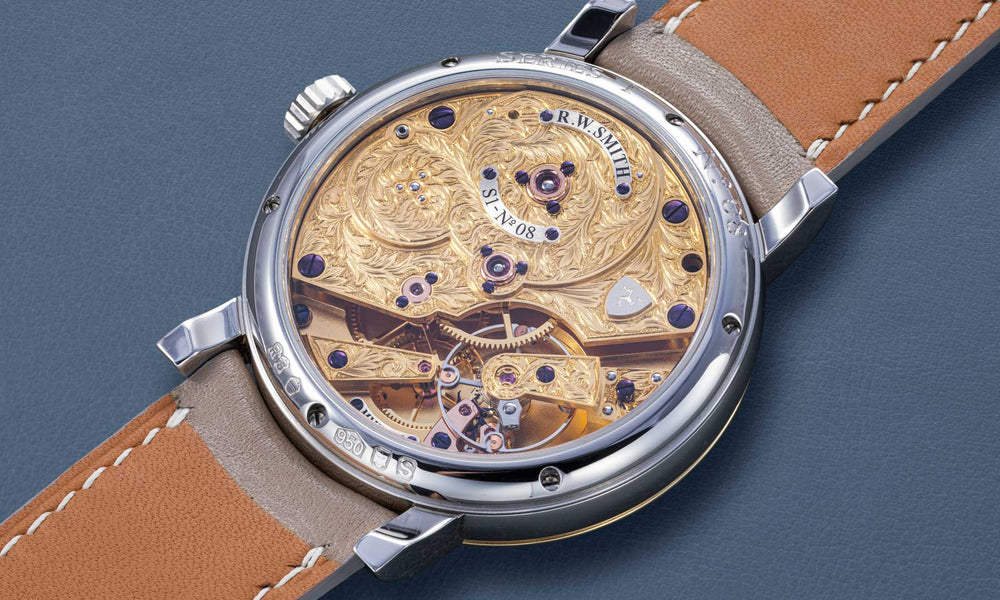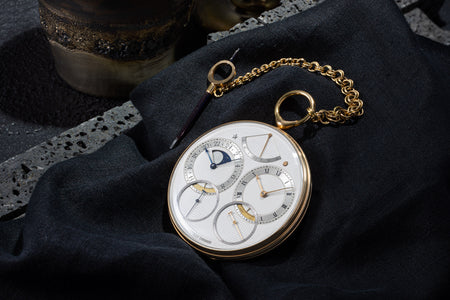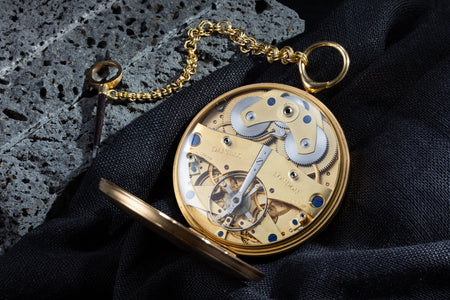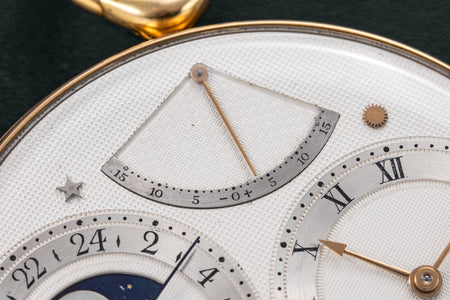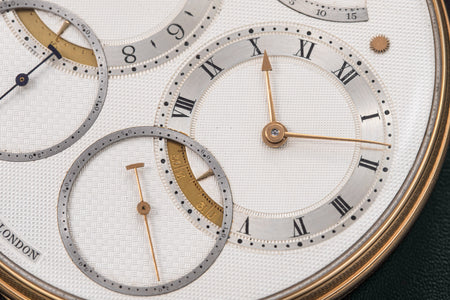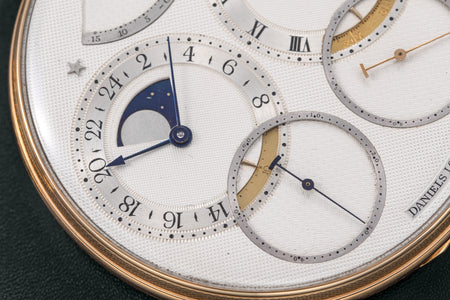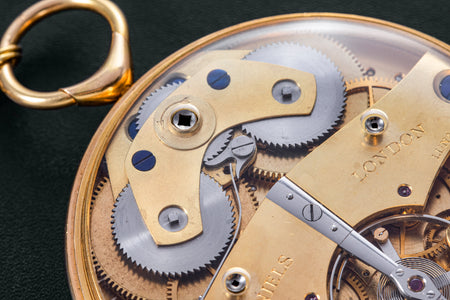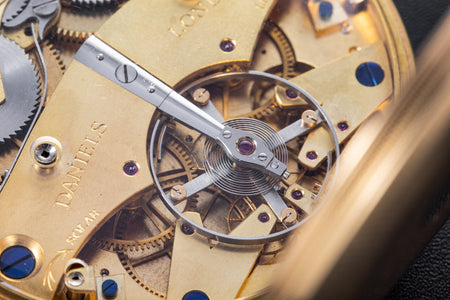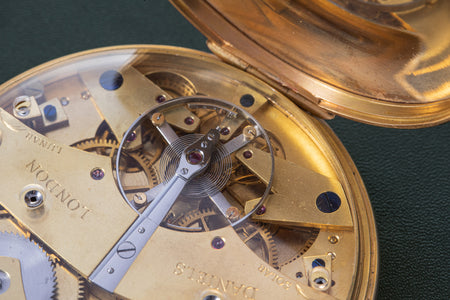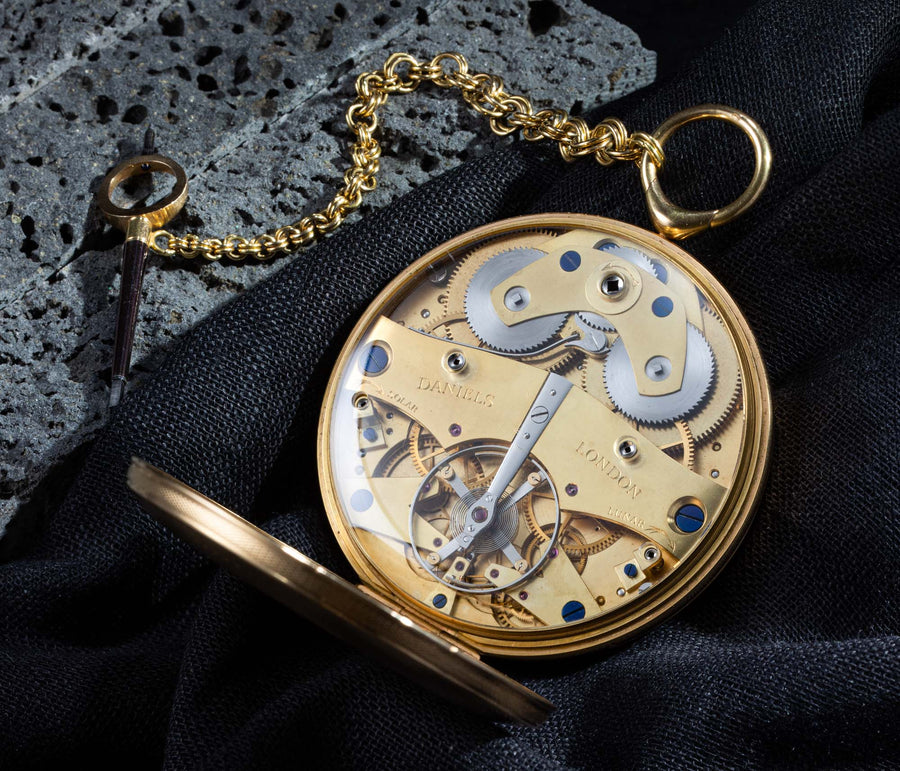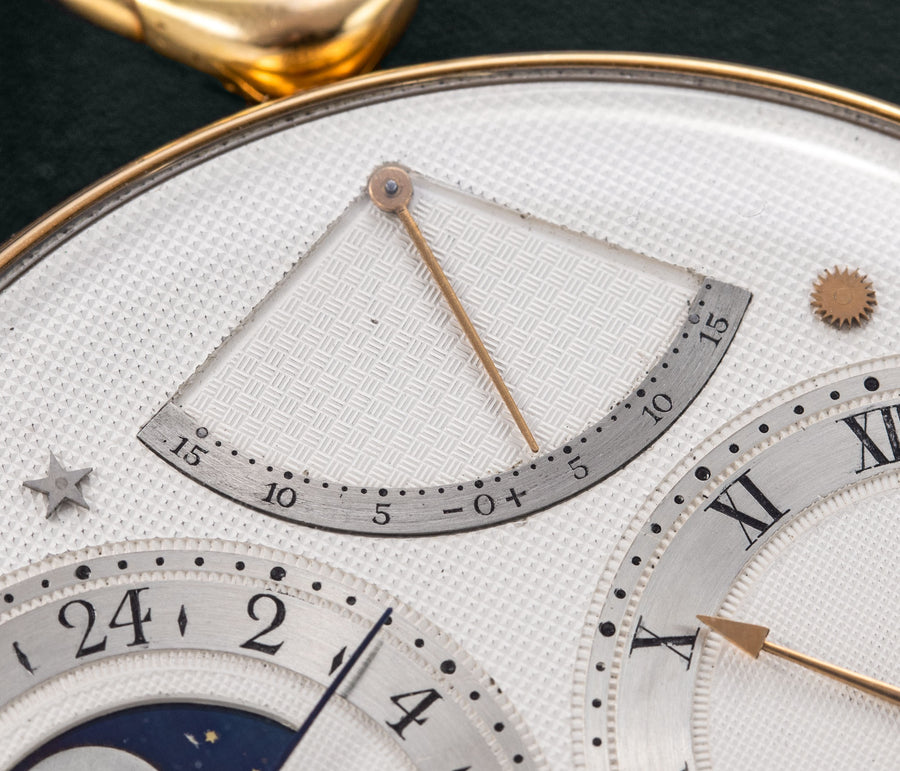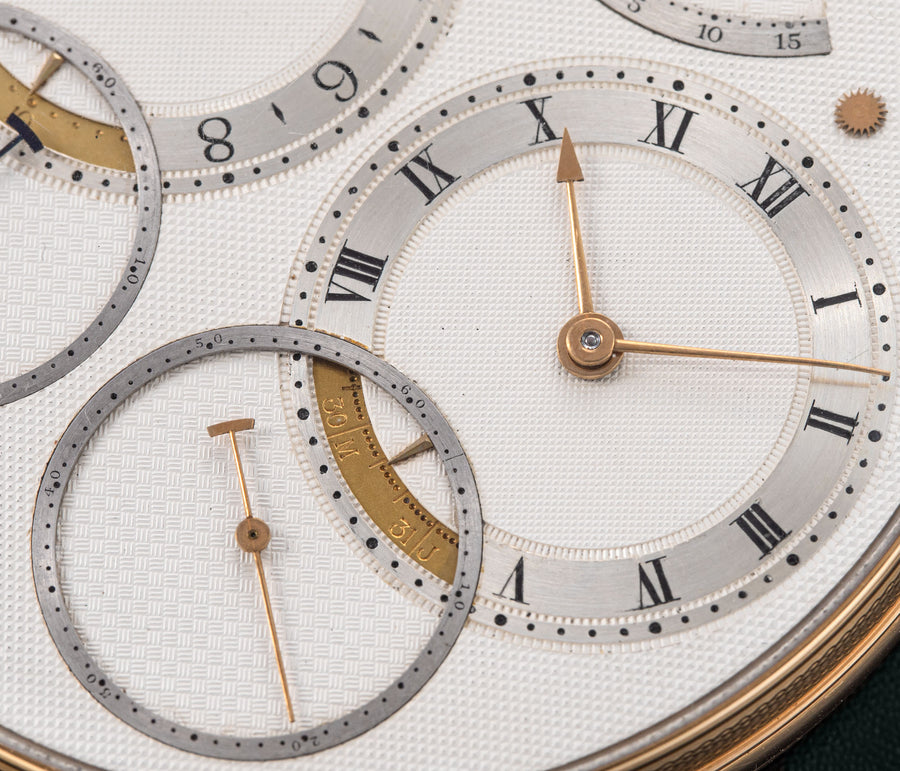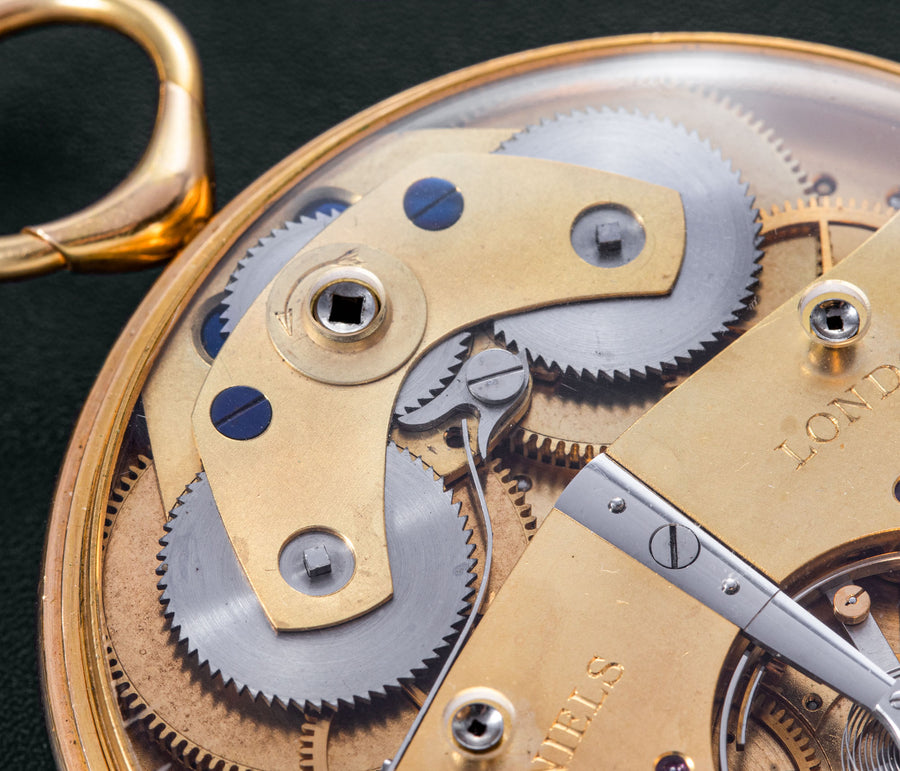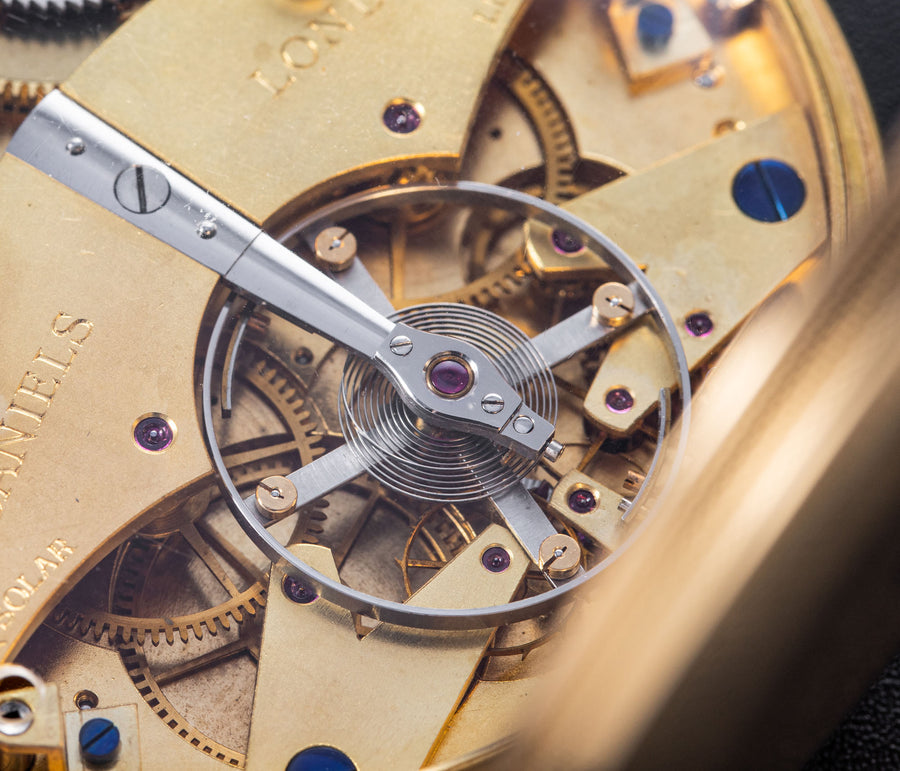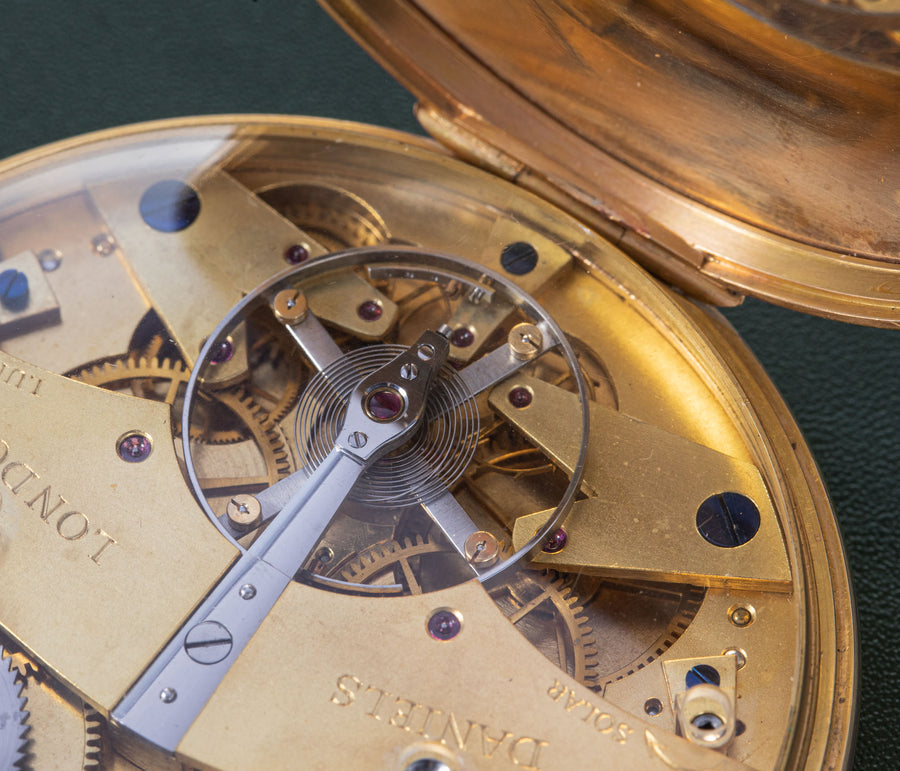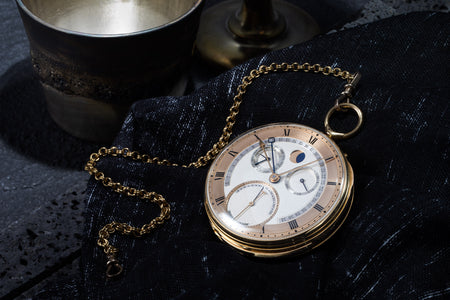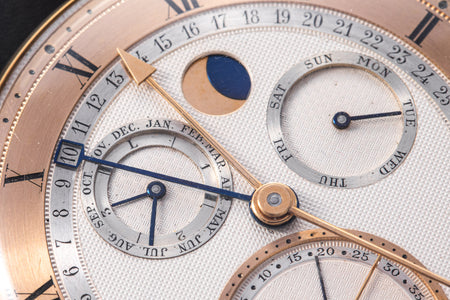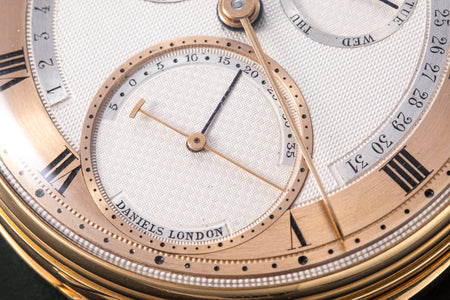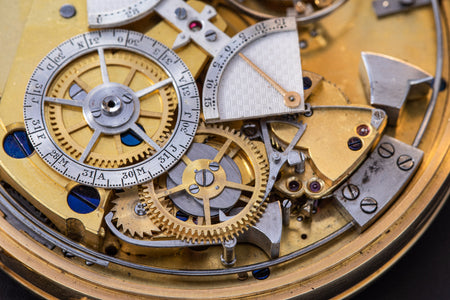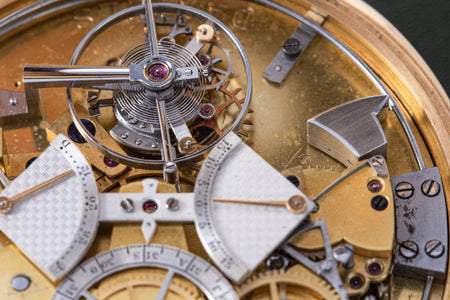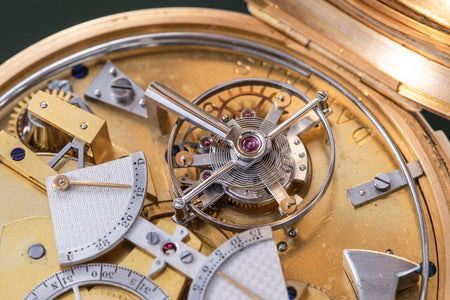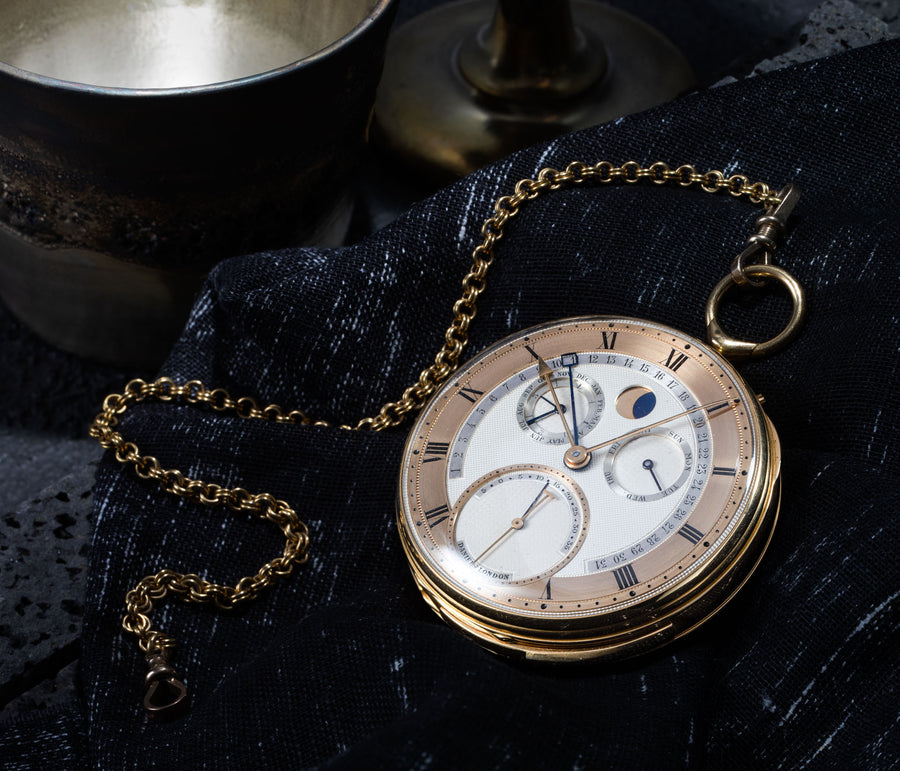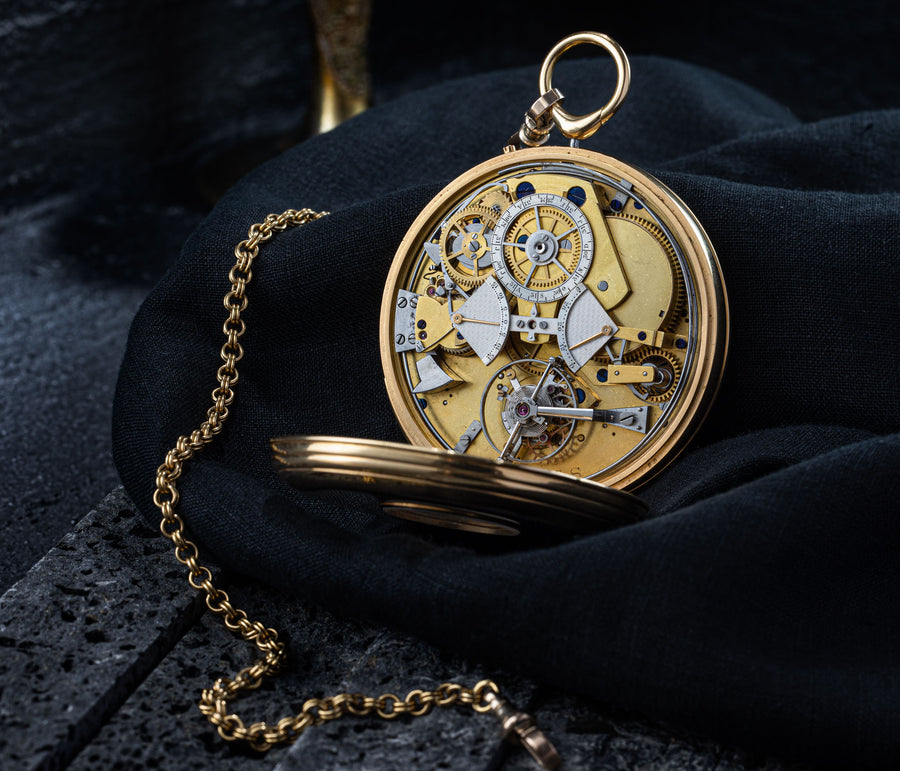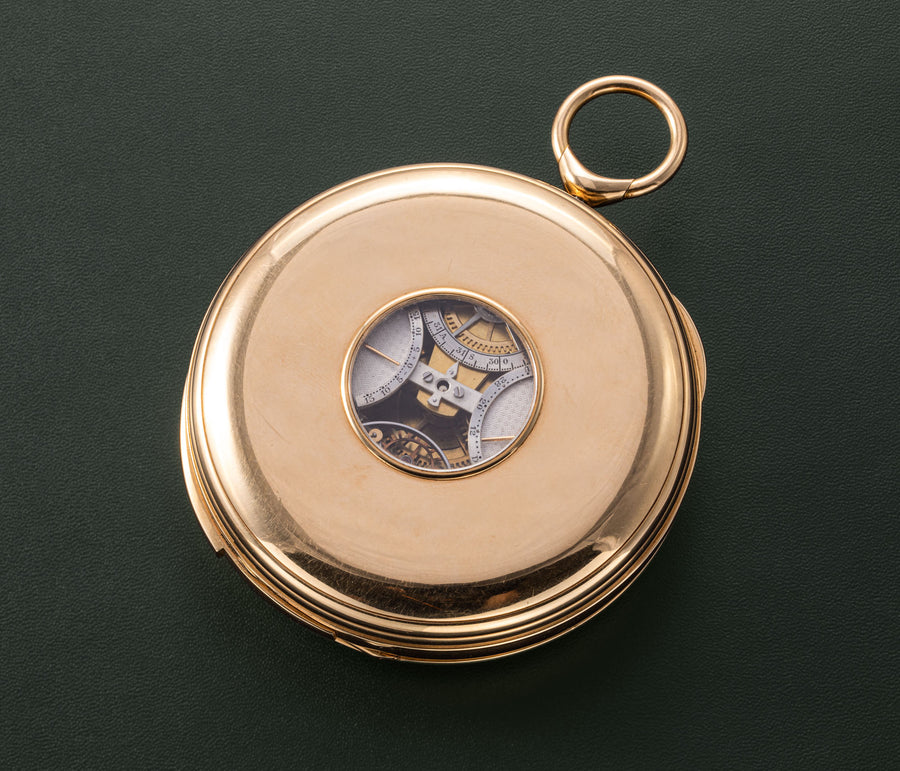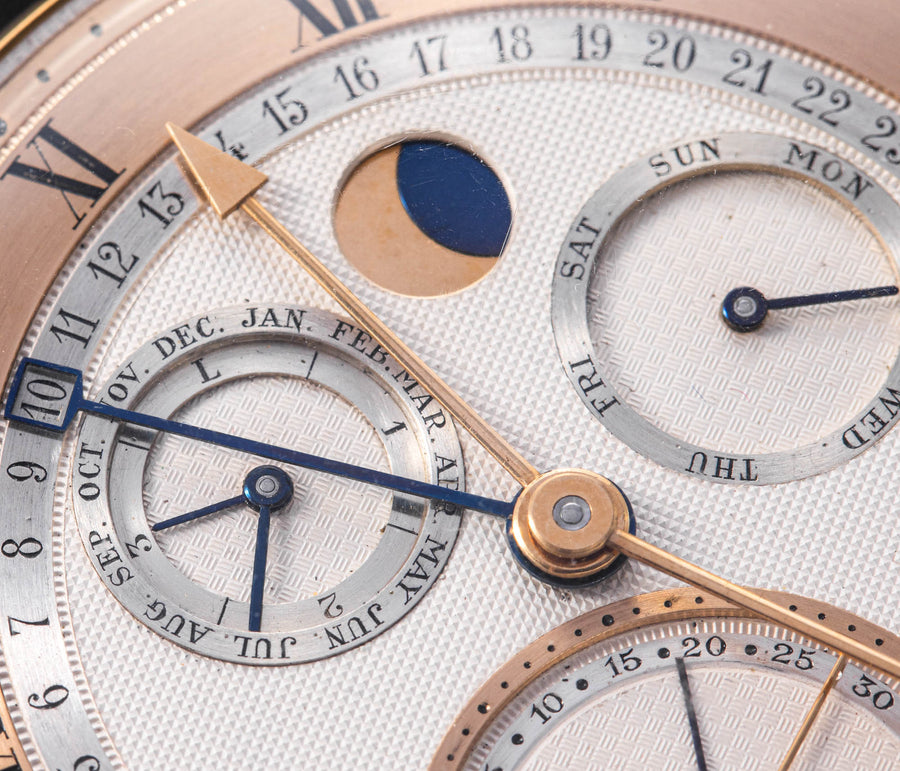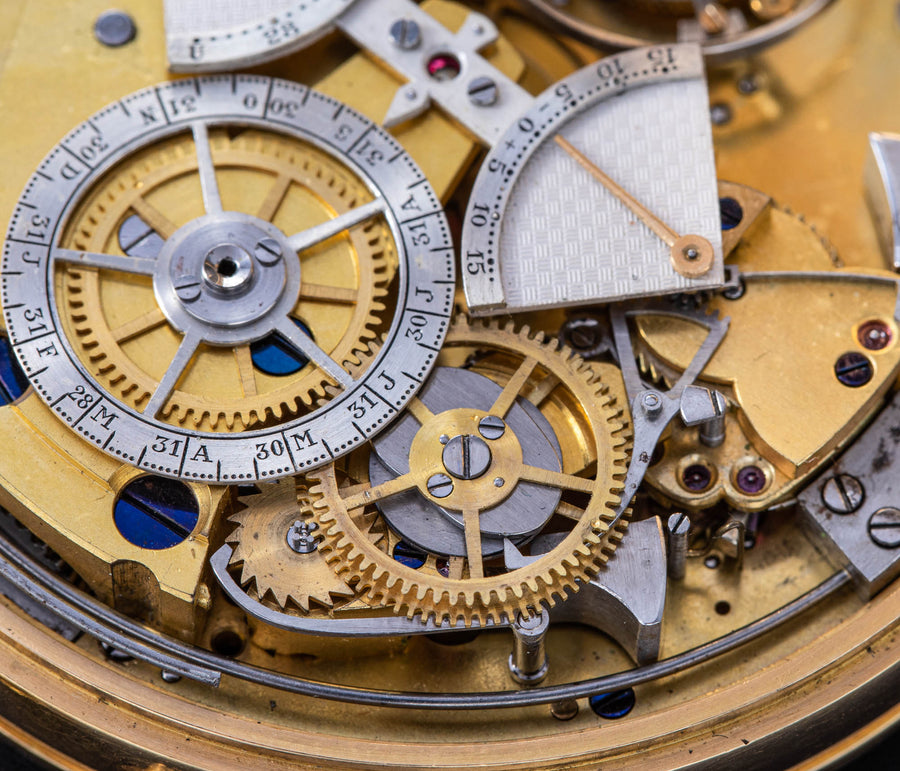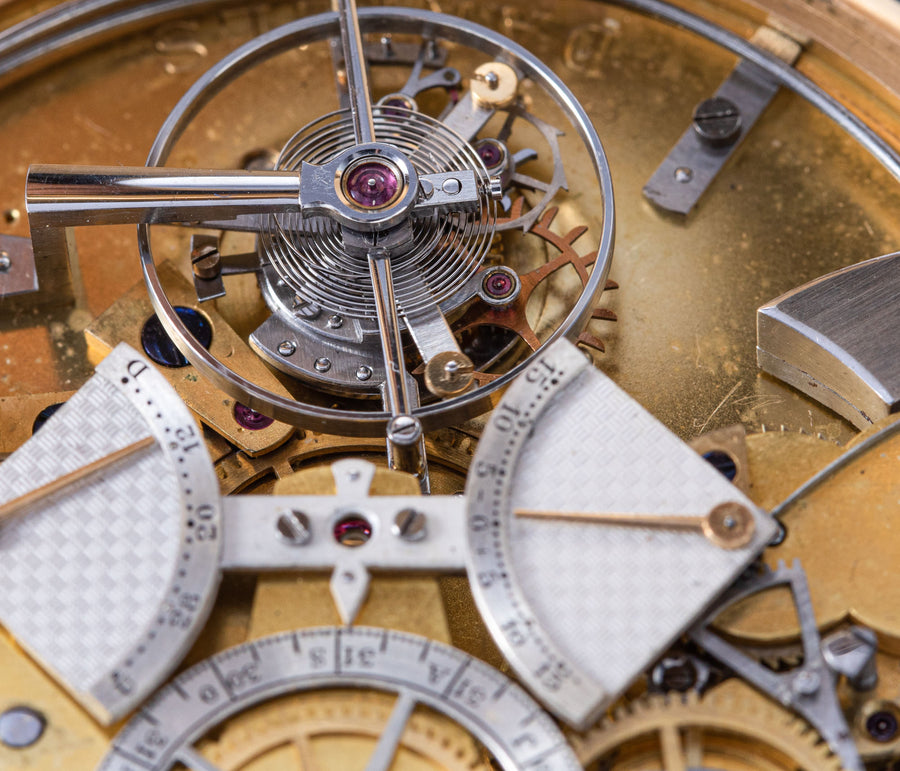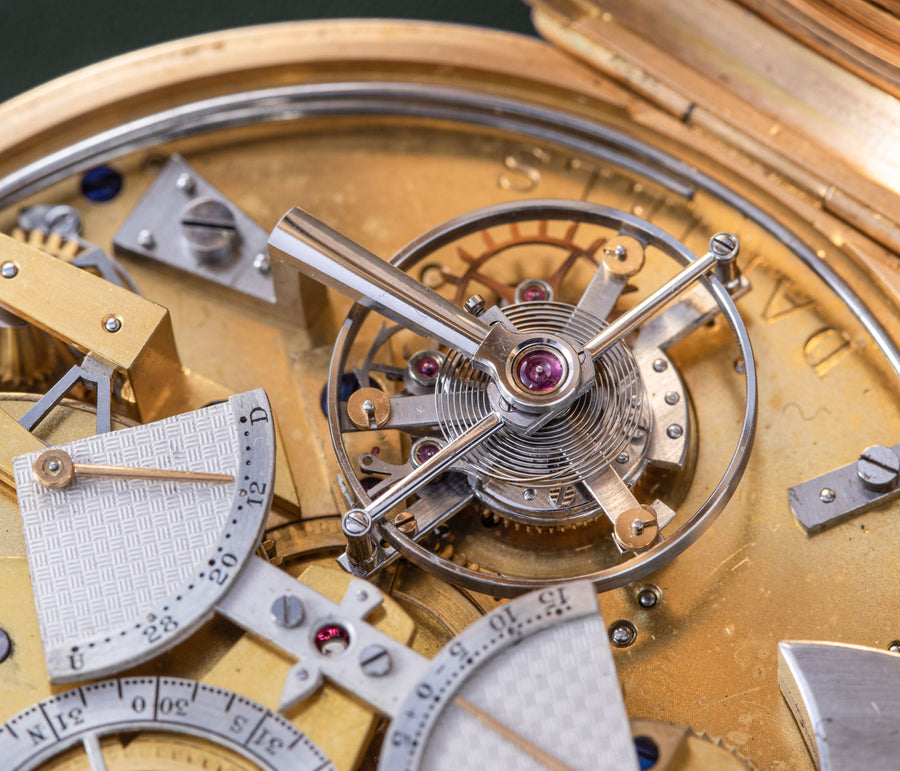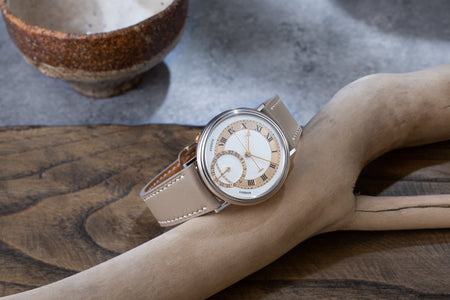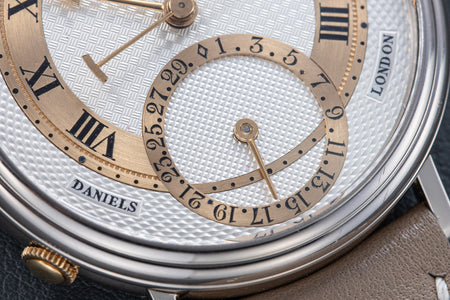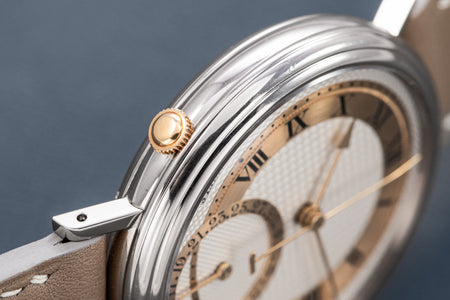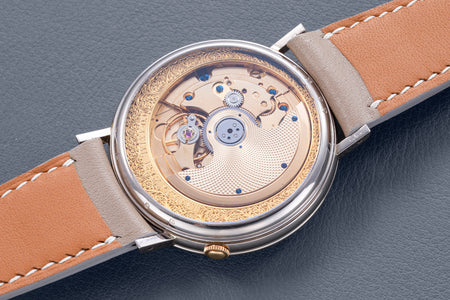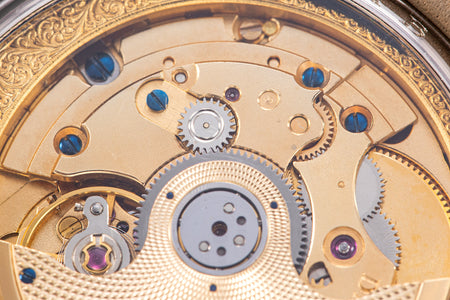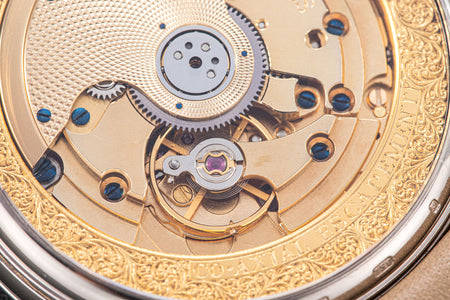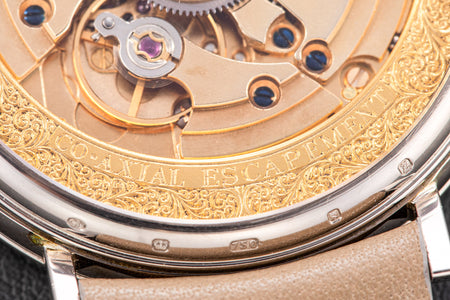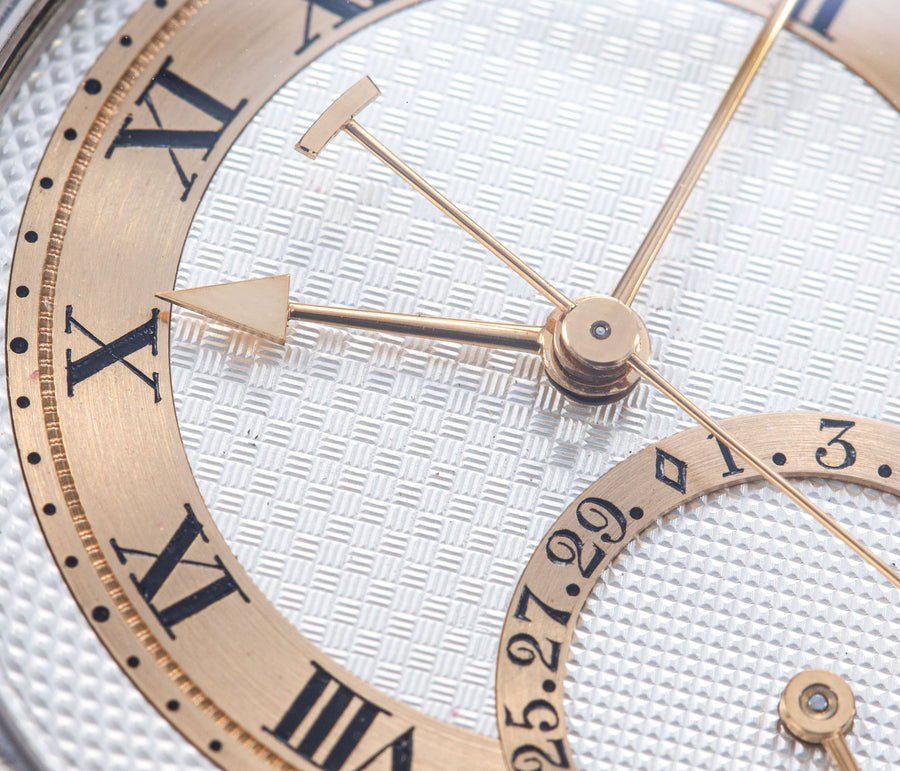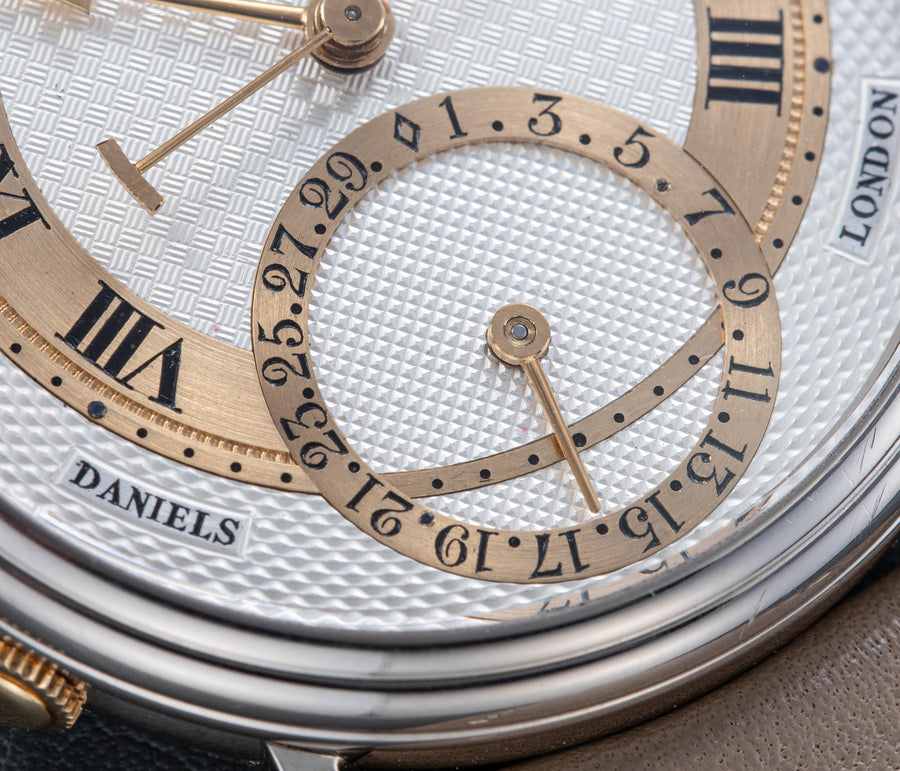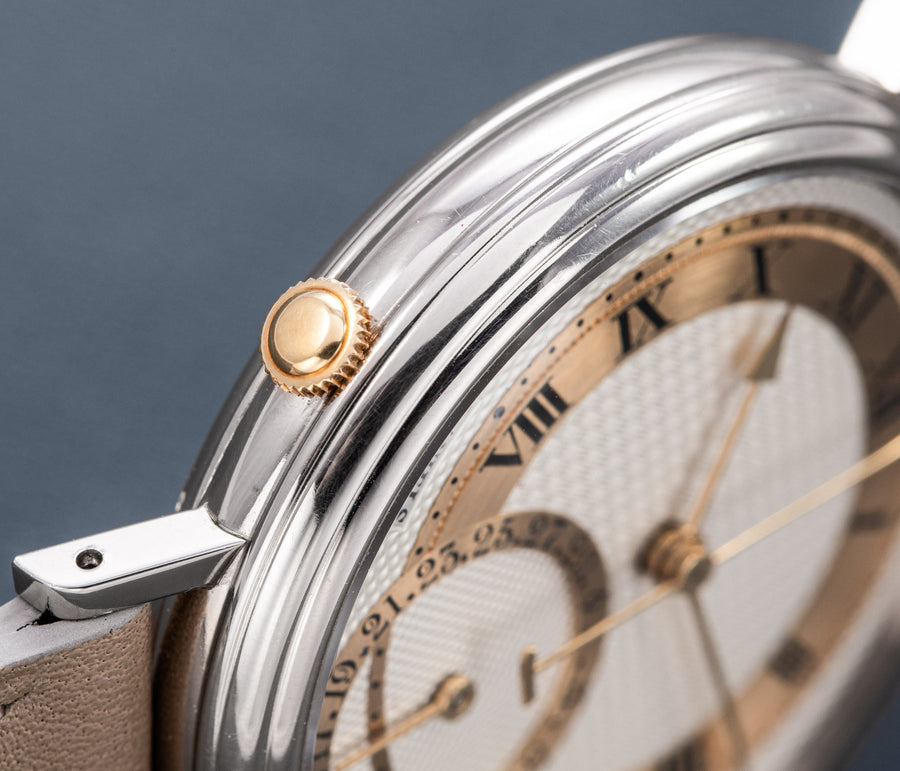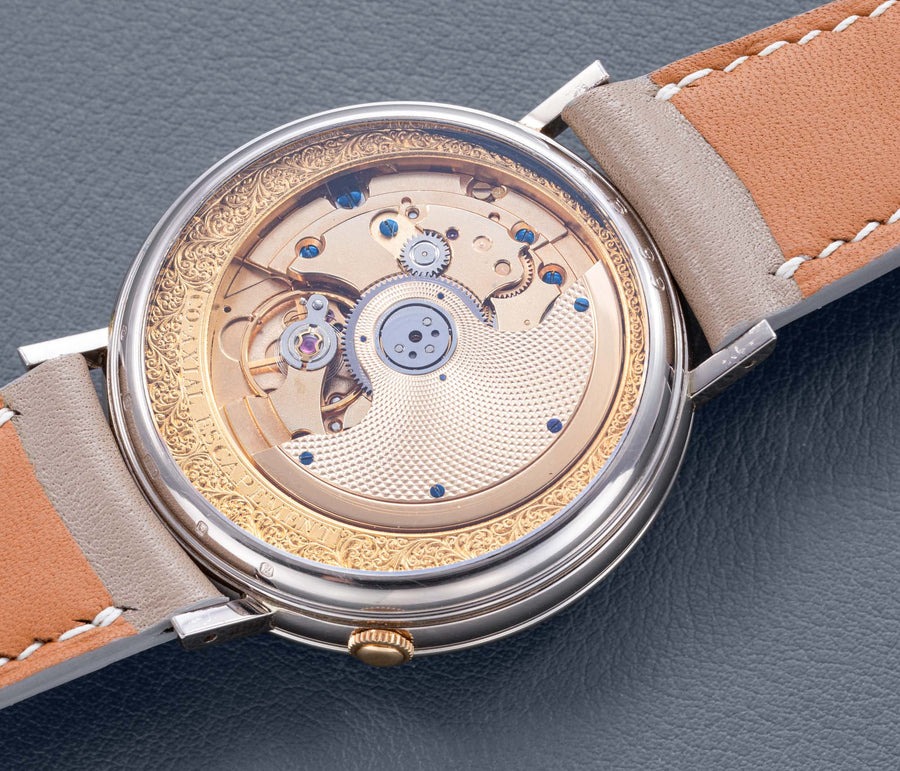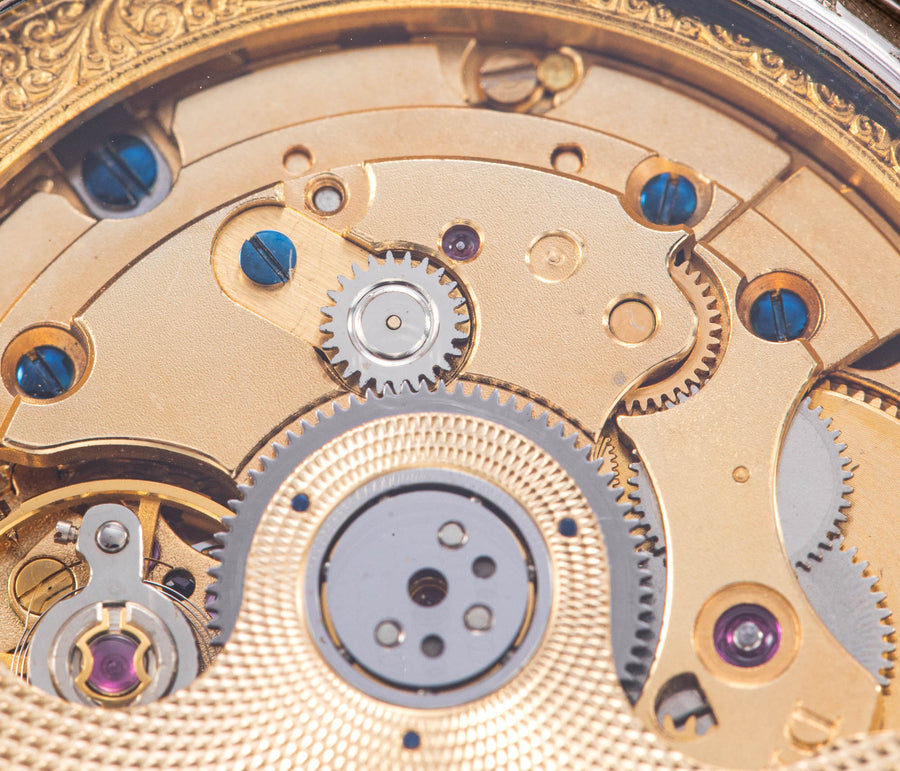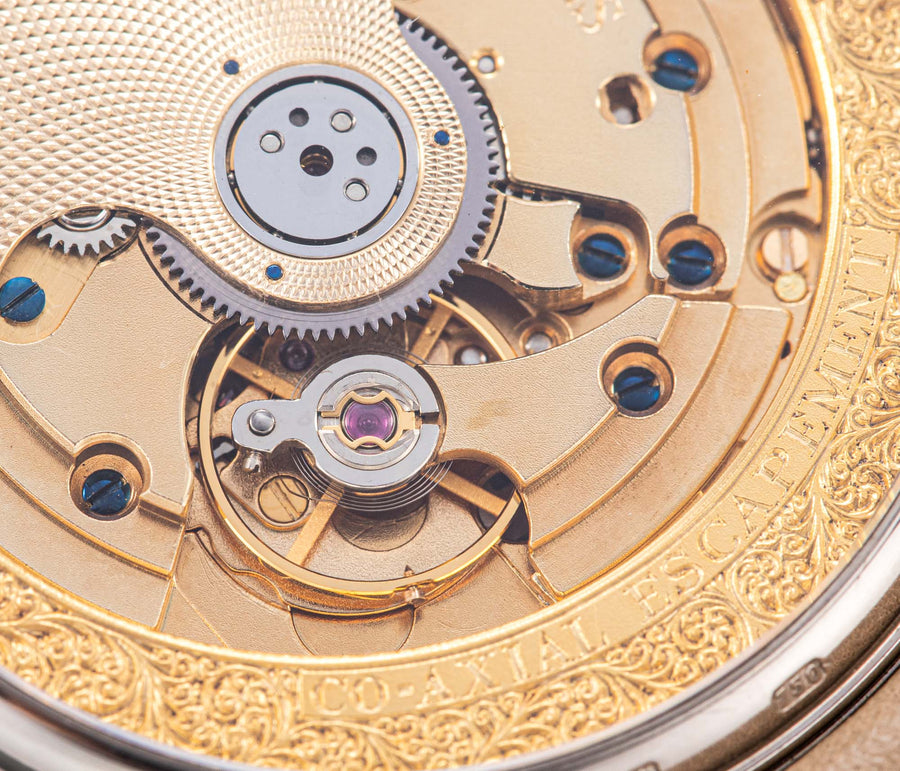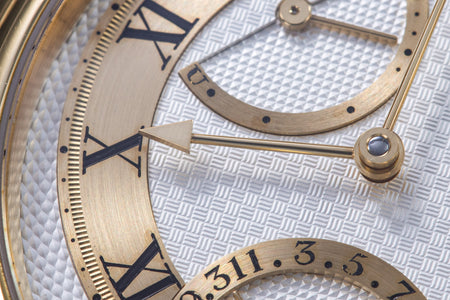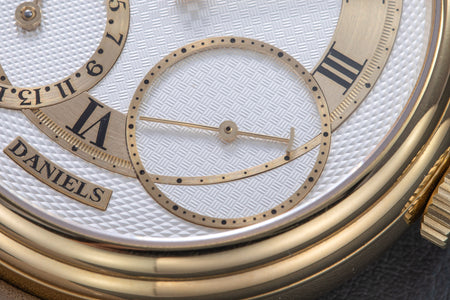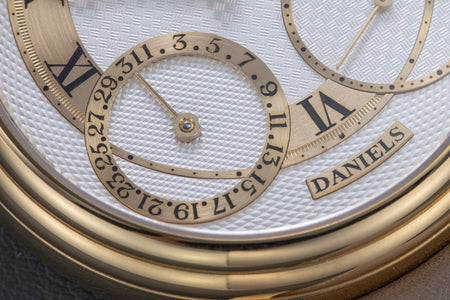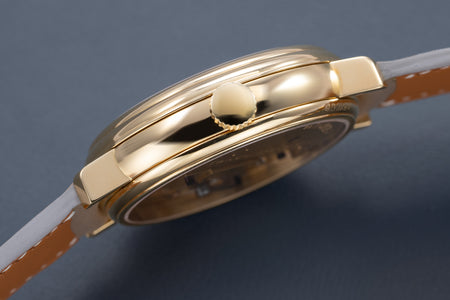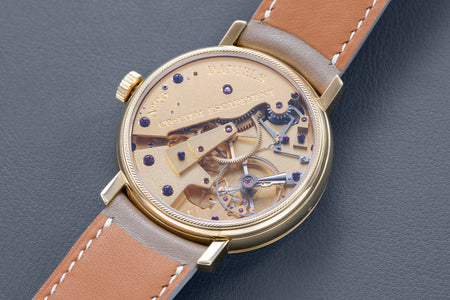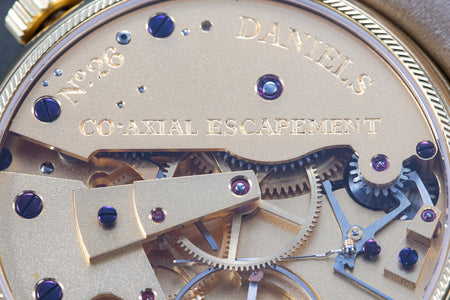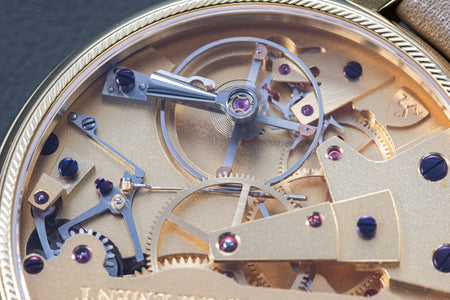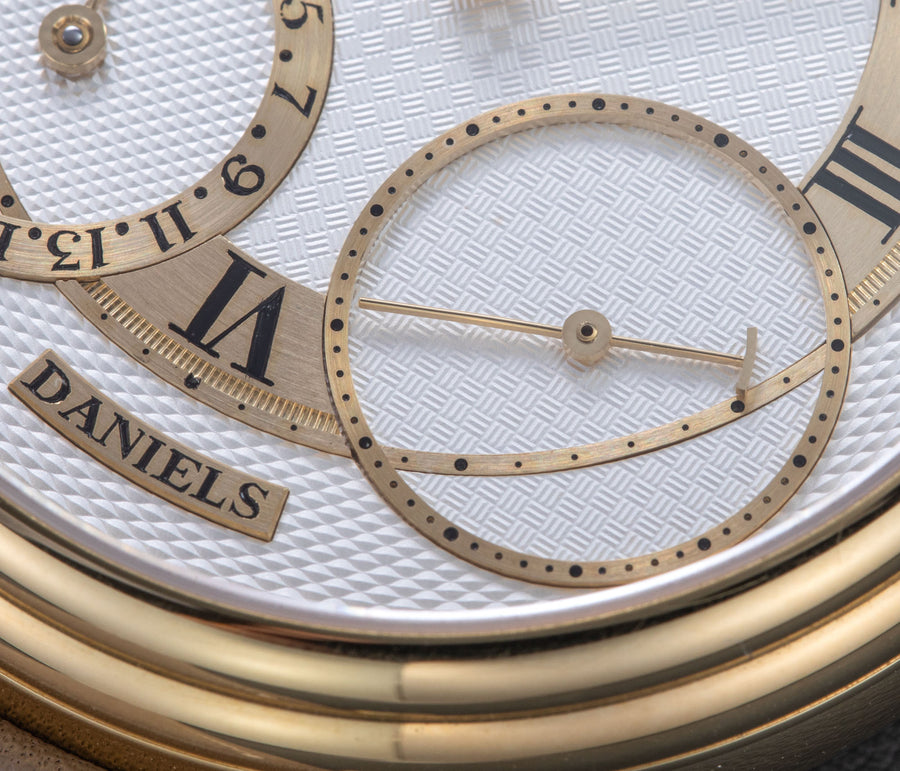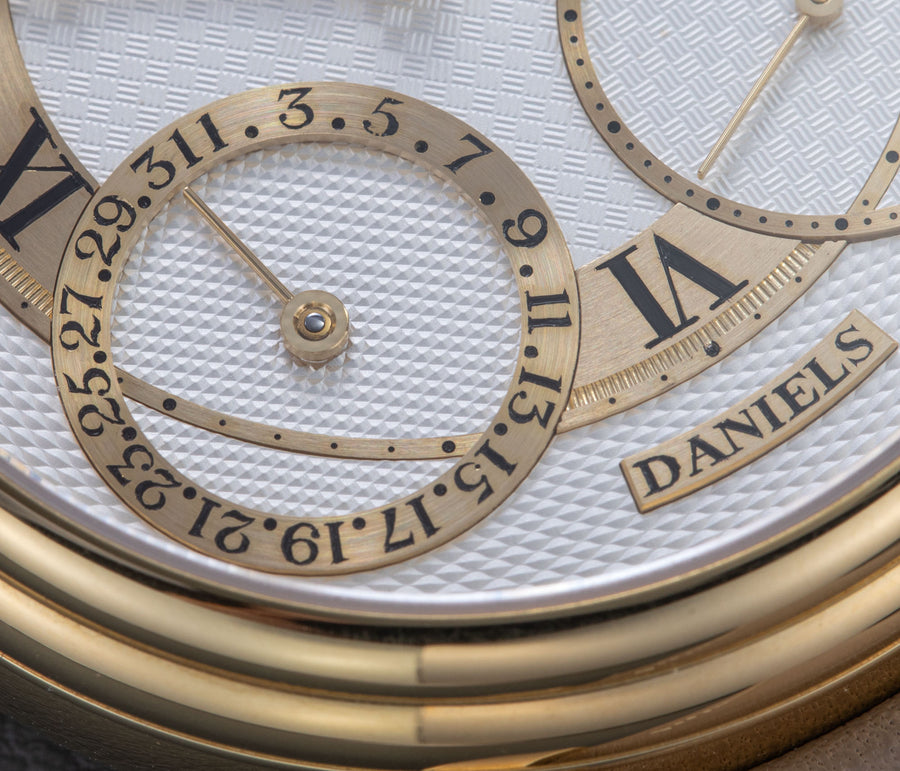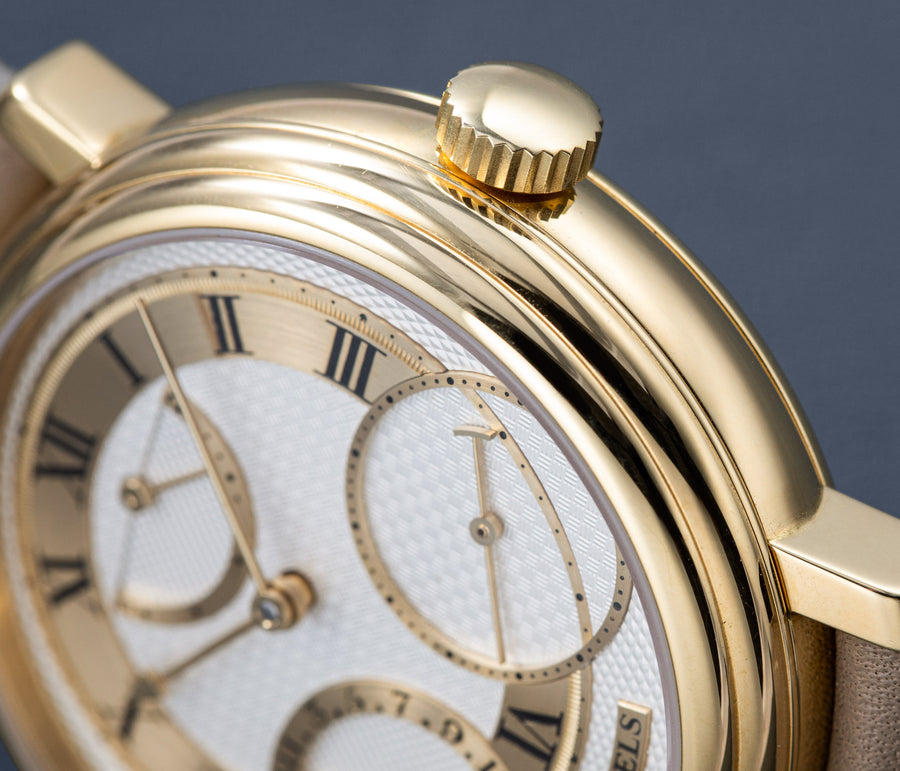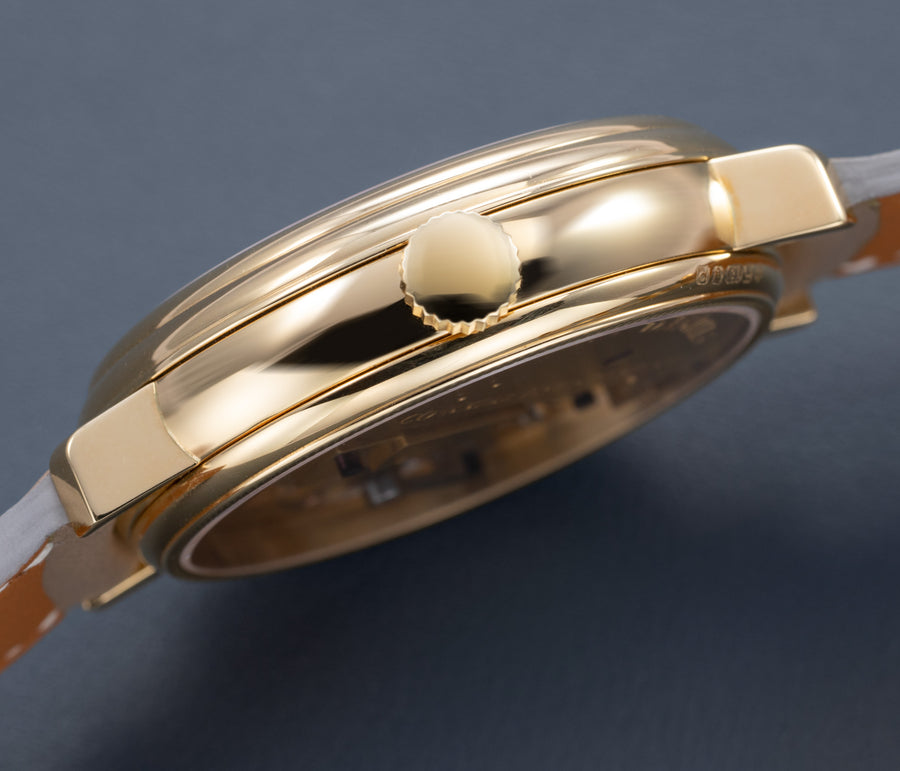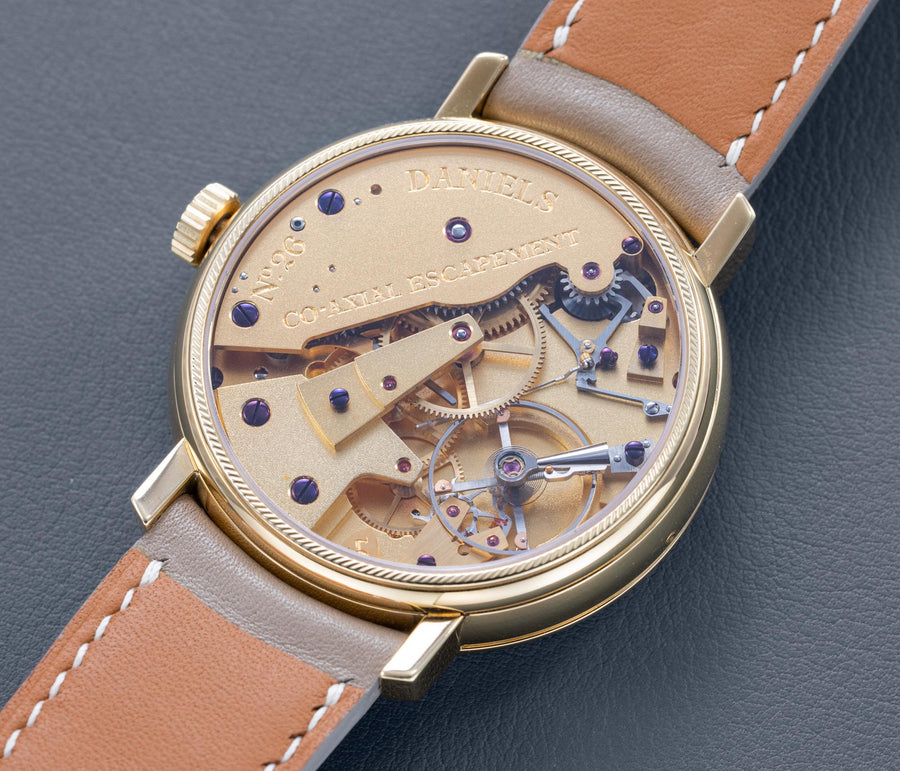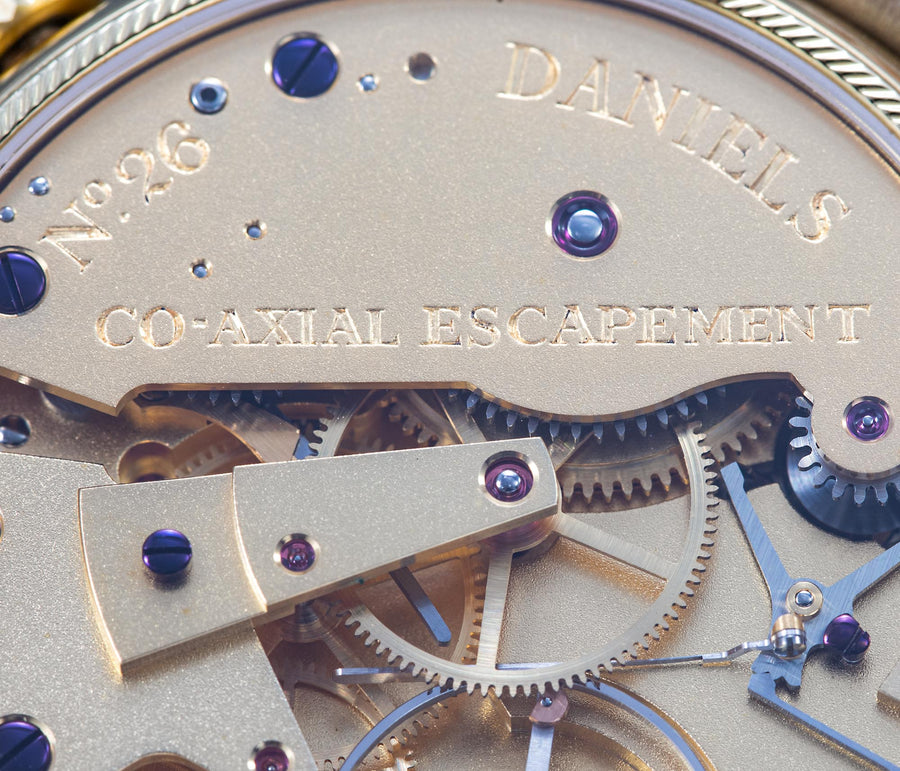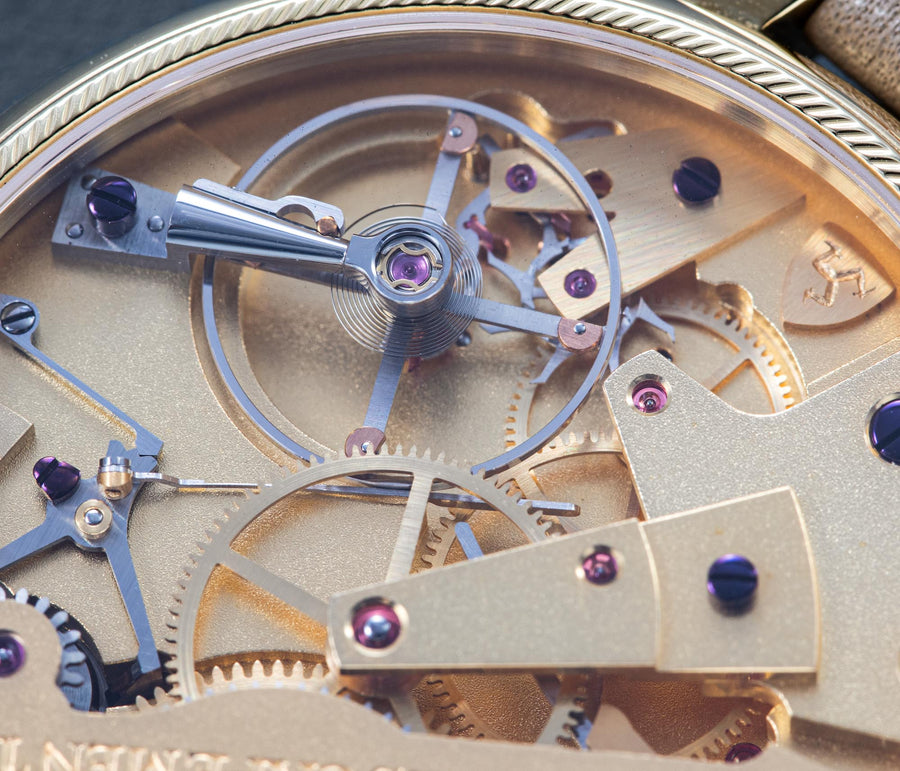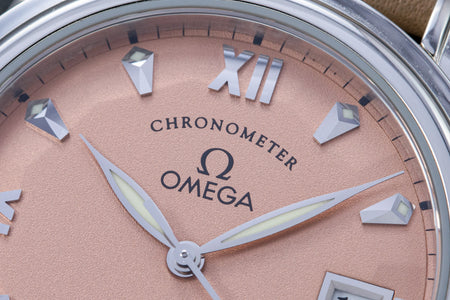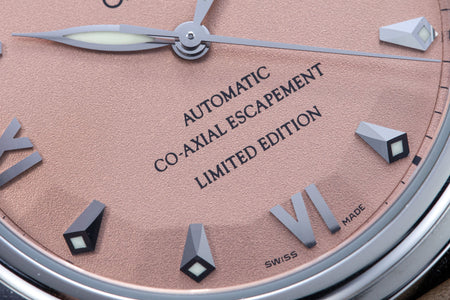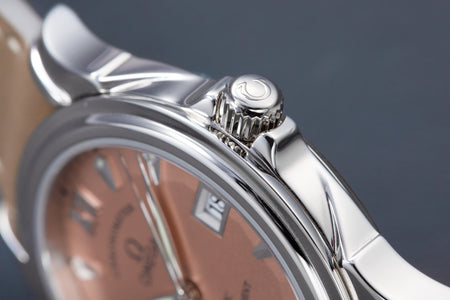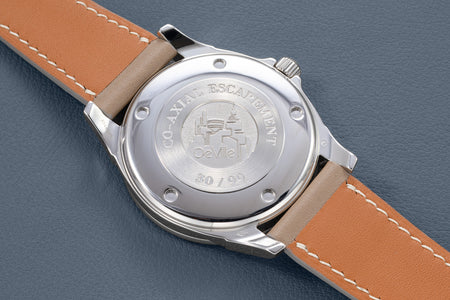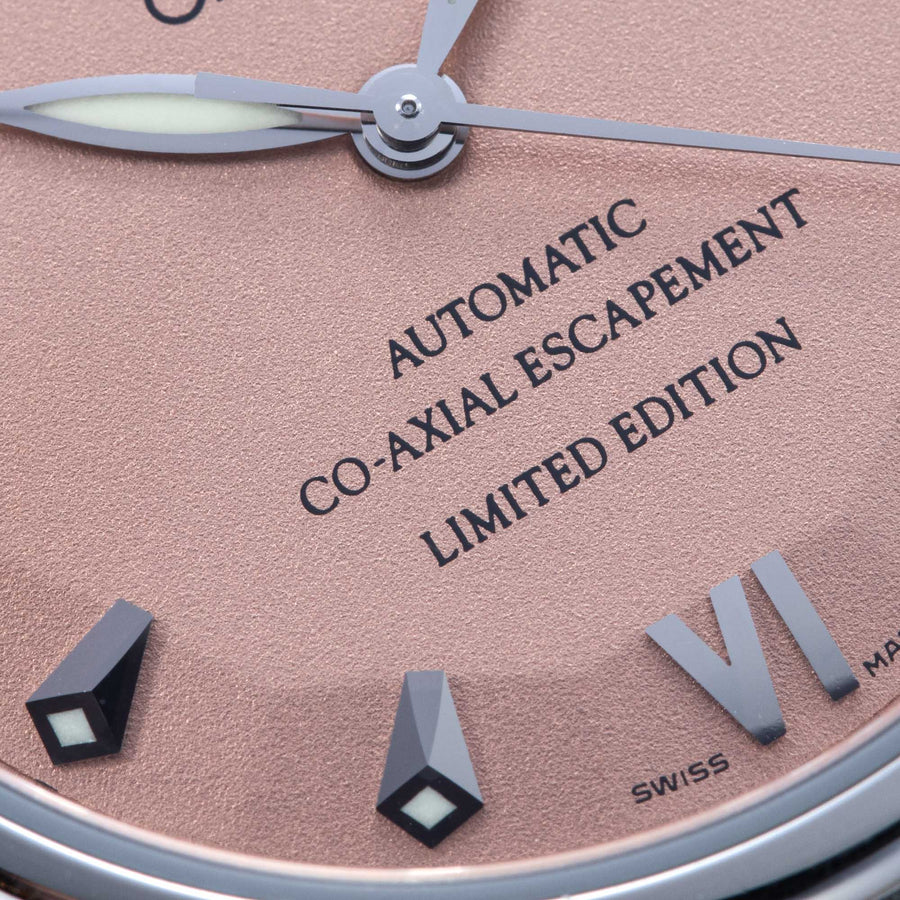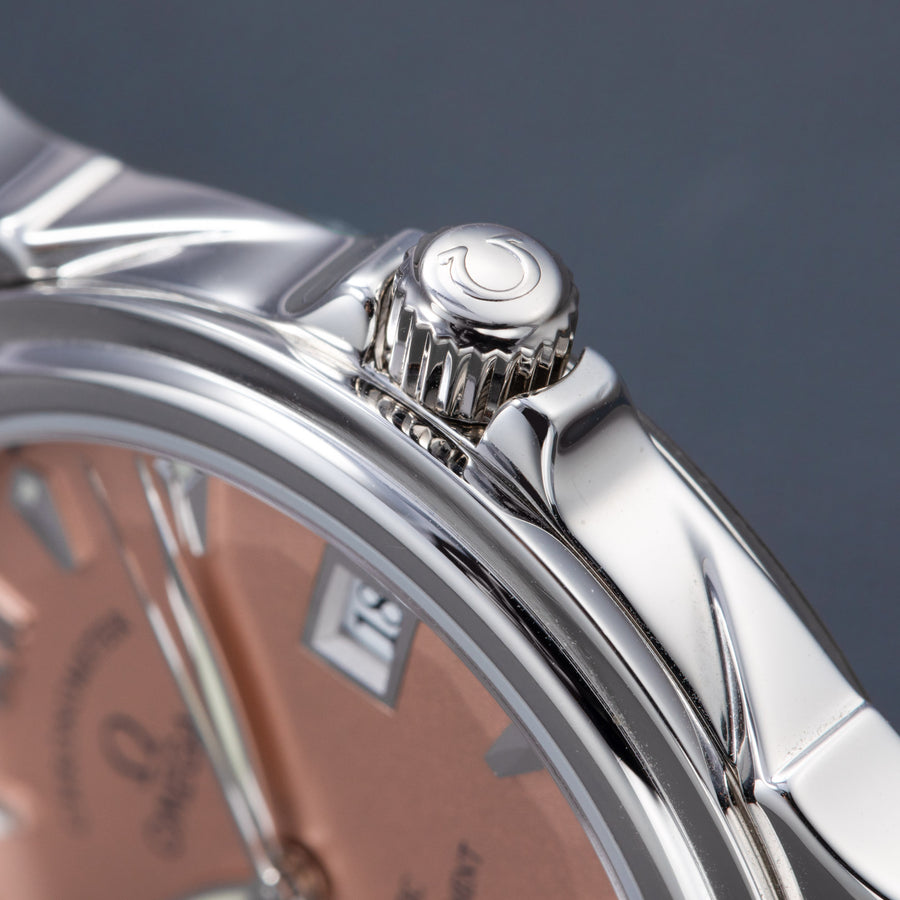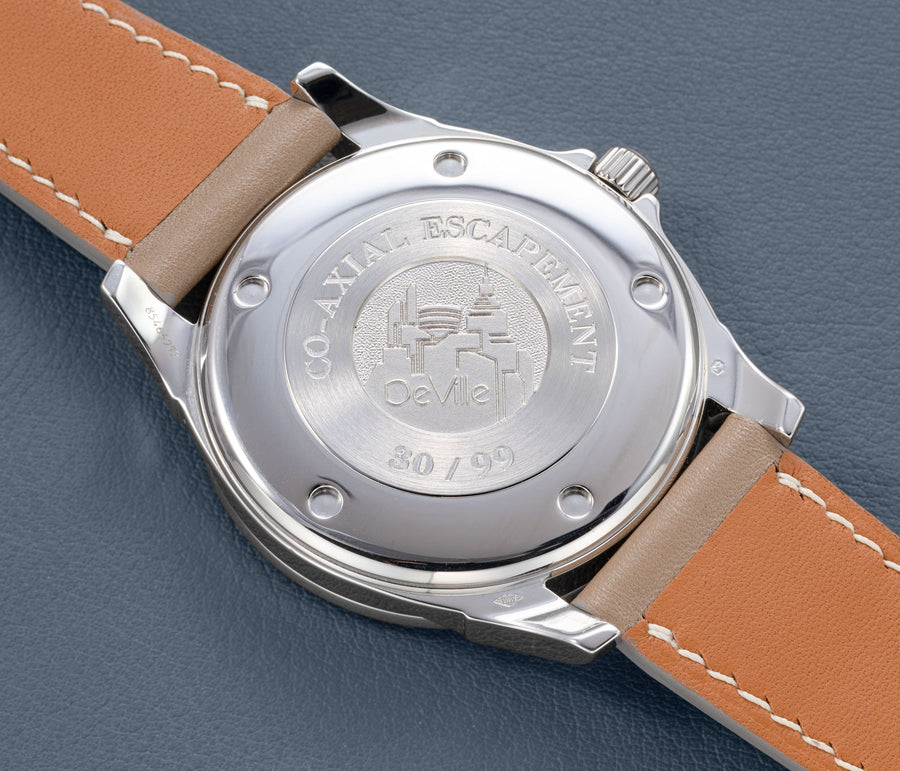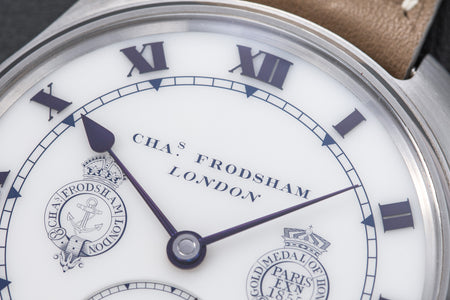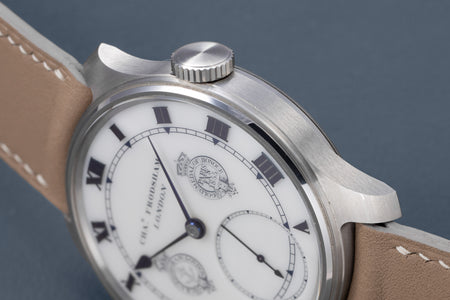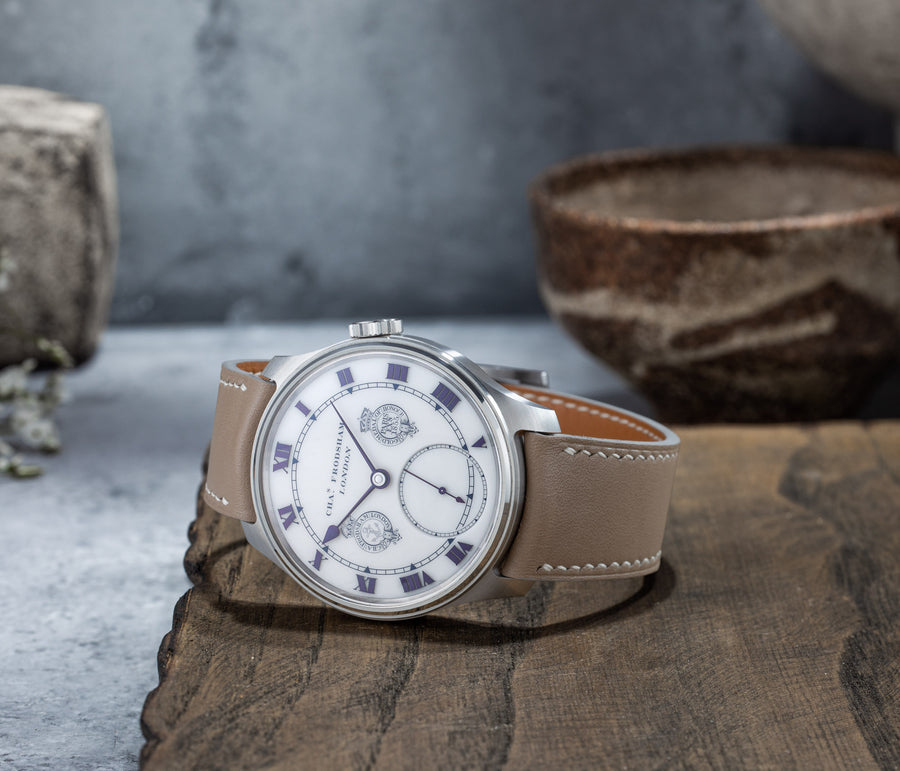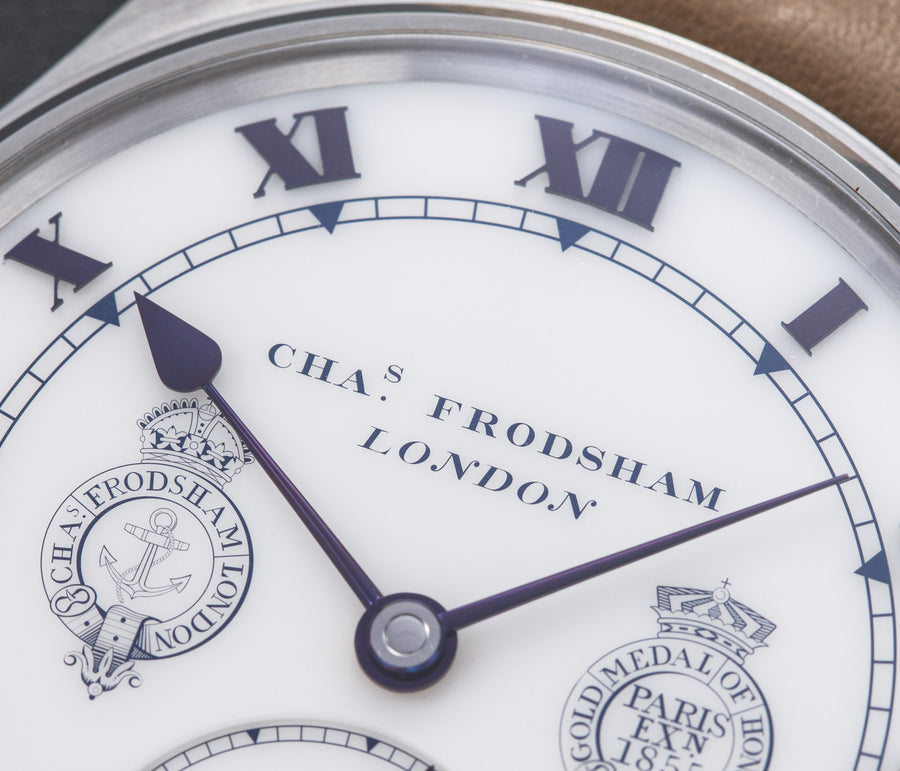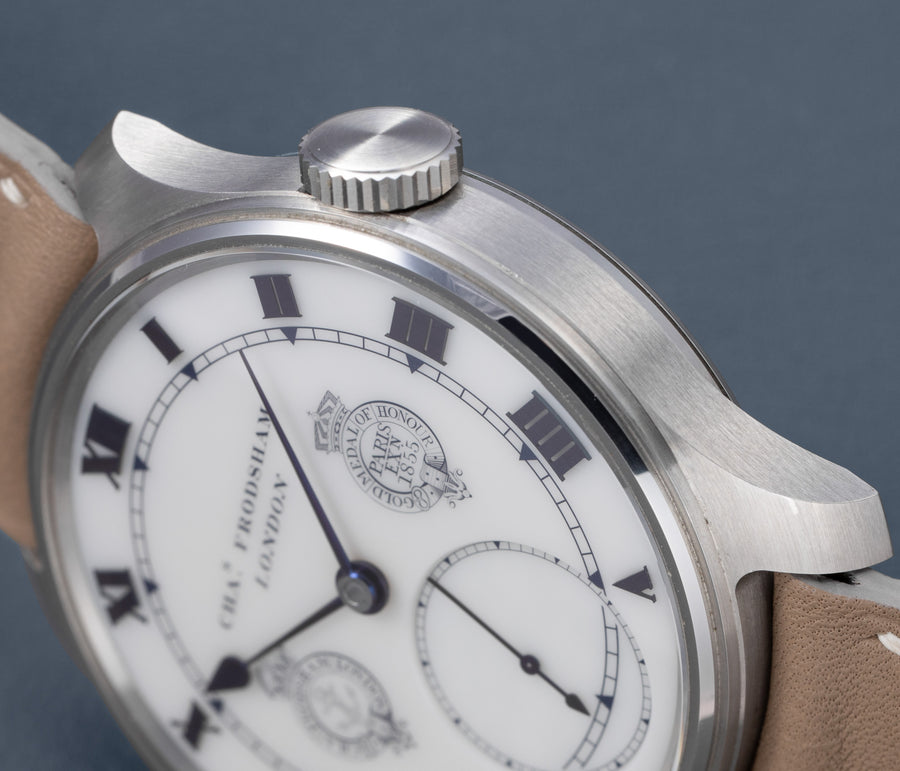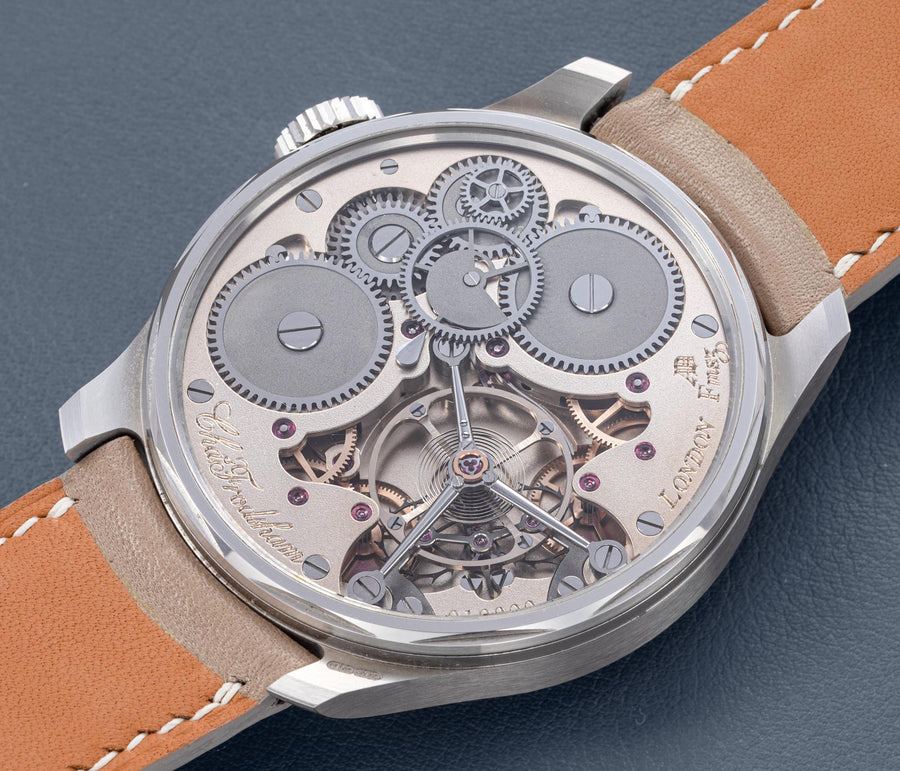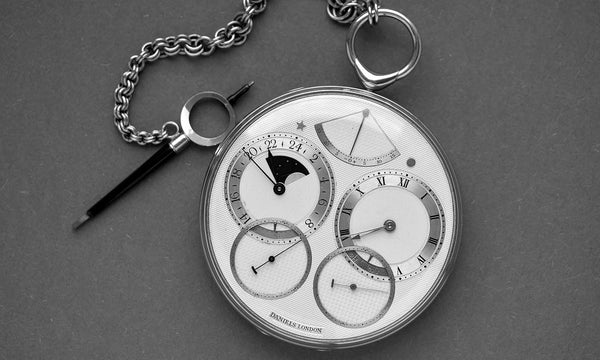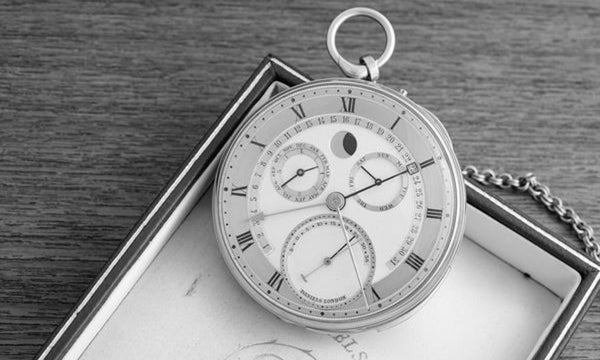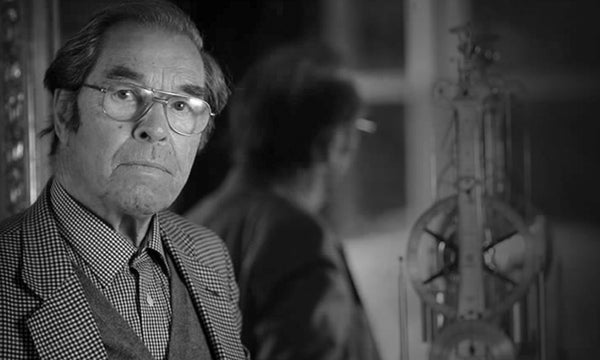Of his mentor George Daniels, François-Paul Journe paid this homage: “You were the pioneer; the first watchmaker who showed us the path to horology of Art, a non-utilitarian horology”.
The phenomenon known as ‘independent watchmaking’, or what we refer to in this exhibition as ‘artisanal watchmaking’, can arguably be traced to George Daniels (1926-2011). Daniels was an English watchmaker whose rise to prominence began as the English watchmaking industry – once the world’s greatest until the beginning of the 20th century – began its terminal decline.
Like many watchmakers before and after, Daniels himself was inspired by Abraham-Louis Breguet, perhaps the greatest watchmaker of all time. In style and substance Daniels’ work was instantly recognisable as being derived from Breguet. Daniels’ famed Space Traveller’s watch for instance, was not just inspired by Breguet’s double-wheel escapement, but also, its aesthetics was based on the design of a trio of 19th century Breguet pocket watches, namely numbers 2807, 3862, and 3863, all of which have a similar, symmetrical, twin-display layout.
1982
George Daniels
Space Traveller I
Work on this first Space Traveller began in 1979 and was completed in 1982. It was equipped with solar and sidereal trains with an independent double-wheel escapement that Daniels, with the help of Derek Pratt, invented in 1974. This in itself was inspired by a similar mechanism devised by Abraham-Louis Breguet in 1789 - the echappement naturale, but one that Breguet was never able to successfully launch into serial production.
Describing the work, Roger Smith said "Of all the watches created by Dr George Daniels, I think his first Space Traveller pocketwatch is perhaps his most enigmatic. It is a historic piece."
1987
George Daniels
The Grand Complication
The most complicated watch ever to feature Daniels’ signature co-axial escapement is the Grand Complication. A large watch with a traditional combination of complications, the Grand Complication features a one-minute tourbillon with the Daniels slim Co-Axial escapement, minute repeating instantaneous calendar, equation of time, moon-phases as well as a thermometer driven by a bimetallic strip. Daniels completed the watch in 1987 and wore it regularly until his passing in 2011.
An immensely talented maker of watches in the literal sense, Daniels had mastered 32 of the 34 disciplines required to craft a watch by hand. His approach to making hand crafted watches is a process more commonly referred to as ‘The Daniels Method’ and which he detailed in a seminal book he authored – ‘Watchmaking’. Daniels’ fascination with all things mechanical propelled him to become the most eminent horologist of the late 20th century.
Ever since Thomas Mudge invented the lever escapement in 1755, no other escapement has been applied so extensively throughout the mechanical watchmaking industry. It's dependance on lubrication though was its archillies heel, and was what prompted Daniels to devise a lubricant-free alternative.
Daniels is best known in the wider world as the inventor of the lubrication-free Co-Axial escapement that he sold to Omega and which the brand industrialised and commercialised throughout their collection - he was also exceptionally influential in high-end artisanal watchmaking.
1999
George Daniels
The 'Alan Banbery' Daniels Millennium
Born of Daniels’ sale of the Co-Axial escapement to Omega, the Millennium Watch was announced in 1998 as a limited edition of 54 watches produced over three years. 47 in yellow gold and 7 in white gold and only two of the seven in white gold were produced in this execution of yellow gold chapter rings. Made with the help of Roger W. Smith – who moved to the Isle of Man for the project - the watches were powered by the very first Omega movements featuring the Co-Axial escapement, the cal. 2500 with a mono metallic free sprung balance.
2009
George Daniels
The 'Firmin Li' Daniels Anniversary
Announced in 2009 for the 35th anniversary of the co-axial escapement, the Anniversary watch was conceived by Daniels, but produced by Roger W. Smith, then his apprentice and now his professional heir. It is the closest thing to a serially produced Daniels wristwatch with a proprietary movement.
Daniels’ success as a watchmaker was made possible by his well-heeled base of patrons, who included collectors like Seth Atwood (1917-2010), an American industrialist who inherited his family’s automobile hardware business. Atwood even had his own watch museum (The Time Museum) in his hometown of Rockford, a 90 minute drive from Chicago. One of world’s most important watch collectors in the late 20th century, Atwood purchased several watches from Daniels, including the only watch Daniels ever made on commission from a client and which resulted in the invention of the Co-Axial escapement.
During his lifetime, Daniels' dream was to see the Co-Axial enter production and for it to be adopted wholeheartedly by the Swiss watchmaking industry. The Omega Co-Axial, and later the Charles Frodsham Double Impulse Chrometer are two examples, at opposing ends of the spectrum, of the realisation of this dream.
1999
George Daniels
Omega Platinum De Ville Co-Axial
Equipped with a close relative of the movement in the Millennium watch, the De Ville Co-Axial was Omega’s inaugural timepiece equipped with Daniels’ escapement. Announced in 1999 in four limited editions – in the three colours of gold along with this rare platinum example – the model was powered by the cal. 2500. And its dial was inspired by the Omega Constellation of the 1950s, featuring a “pie pan” shape as well as arrowhead markers.
2018
Charles Frodsham & Co
Double Impulse Chronometer
In 2004, at the suggestion of Derek Pratt Frodsham went on to further build on Daniels' idea behind the double impulse chronometer escapement. Daniels himself was inspired by Abraham-Louis Breguet’s échappement naturel, or “natural escapement”, and developed with significant help from Pratt.
The double impulse chronometer escapement in the Frodsham wristwatch is, in many respects, the realisation of an idea developed by three great watchmaking talents over two centuries – Breguet, Daniels and Pratt.
Learn More
Discover More

The Great Unknown
Derek Pratt
Enter Room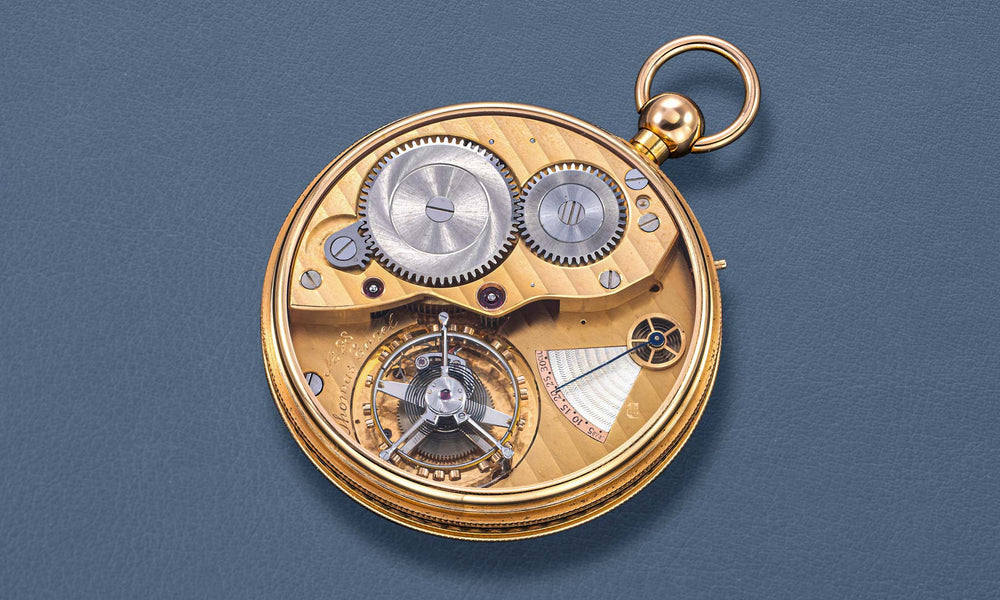
The German Connection
Engel & Daners
Enter Room